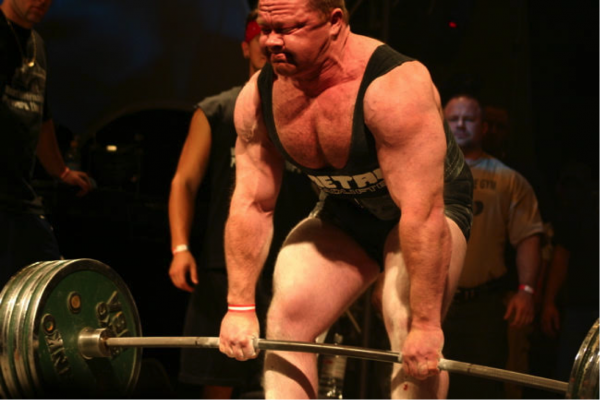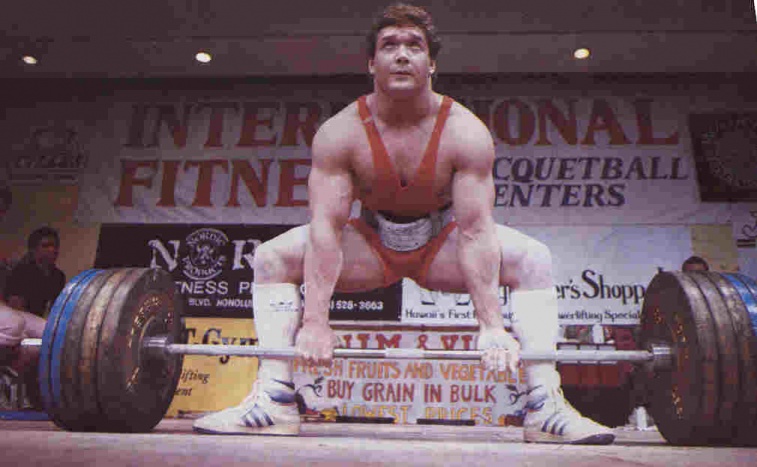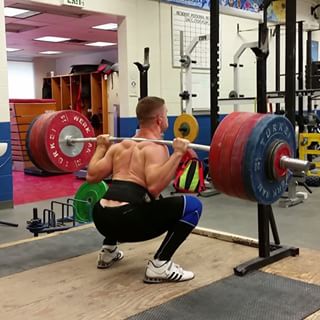The Mash “Program Sampler 2” comes out Friday with 8 all new programs (2 weightlifting, 1 powerlifting, 1 SuperTotal, 1 Athletic Performance, 1 Athletic Speed, and 2 Functional CrossTraining workouts). Today you can check out one of our nine existing E-Books:
• “Squat Every Day” (High Frequency Squat Programming)
• “Eat What You Want” (Nutrition, Macros, and a built-in Macro Calculator
• “Squat Every Day 2” (Part 2 of High Frequency Squat Programming)
• “No Weaknesses” (Defeat Muscular Imbalances crush the Recovery Game)
• “Mash Program Sampler” (Athletic Performance, Oly, Powerlifting, and Functional Programming)
• “The Mash Blueprint for Program Design” (Learn all about Programming)
• “Performance Zone” (Defeat all Mental Roadblocks)
• “Train Stupid”(Programming and Philosophy of Nathan Damron)
• “MashJacked” (Hypertrophy for Performance and Aesthetics)
Check them out here: ⇒ Mash Elite E-Books
Squat Every Day or Maybe Not: a Look at Squat/Exercise Frequency
Obviously I am a proponent of the “squat every day” training ideology. I mean I did write the E-Book “Squat Every Day”. I definitely believe that the body will become more efficient the more often a movement is practiced. Coach Glenn Pendlay was a part of a study where the exact same volume was split up on a daily basis versus three days per week. The group that performed the volume on a daily basis got stronger and experienced a greater amount of hypertrophy.
I can simply go by my own experience and the experiences of the athletes that I work with worldwide. When I performed the Mash Squat Every Day Program, I set personal records at 42-years-old that I hadn’t experienced since my 20’s. I was able to hit the following markers at 42:
• Snatch 135kg/297lb
• Clean & Jerk 170kg/374lb
• Jerk 182kg/400lb
• High Bar Back Squat 295kg/650lb
• Bench Press 405lb
• Deadlift 317.5kg/700lb
High frequency works! I don’t think that anyone who has tried it would disagree, but there is another side of this conundrum. I have witnesses quite a bit of injuries from people that have solely stuck with this training ideology. Now what I am about to talk about is simply observations, so you can take it or leave it. I have witnessed athletes in their early 20’s to early 30’s suffer numerous injuries. I would chalk it up to genetics if it weren’t for the great number of top athletes getting injured while training with the high frequency methodology.
I can say first hand that after six months my joints were starting to feel the wear and tear. Now I will be the first to admit that I didn’t adhere to my own recommendations of high volume bodyweight lunges to strengthen the ligaments and tendons. Here’s the thing. I was able to train at a high International level without injury until I was 34-years-old. That’s a pretty darn good streak not to mention that I started when I was 11-years-old. That’s a lot of miles without a major injury.

As we I got older injuries started to become a little more of a threat, but not in my 20’s and early 30’s. Guys like Ed Coan, Steve Goggins, and Kirk Karwoski were all able to train into their upper 30’s and into their 40’s without major injuries. All three of these men were able to sustain a long and successful career without major injuries. None of them used high frequency, so obviously you don’t have to use high frequency to get strong.

So does this mean that I am saying to abandon the Squat Every Day Methodology? No way! Here’s what I recommend for all of you reading this. I recommend that you take at least one or two 8-week blocks out of each year to focus on hypertrophy. I recommend that you take the time to cut down the frequency of all multi-joint exercises. During this time, I recommend that you focus on the following:
• Muscular balance
• High reps 6-15 at a moderate weight
• Focus on eccentric contractions to minimize load, to promote hypertrophy, and to increase stabilization.
• Focus on some movements that are neglected during competition or peak training cycles like unilateral movements and basic bodybuilding exercises.
• Focus on Recovery and Rest
If you are an Olympic weightlifter:
• Snatch no more than twice per week
• Clean & Jerk no more than twice per week
• Consider different variations of the competition lifts like hangs and blocks
• Squat no more than 3 times per week
• Pull no more than 2 times per week
If you are a Powerlifter:
• Squat no more than 3 times per week
• Bench Press no more than 2-3 times per week
• Deadlift no more than 1-2 times per week
• Consider different variations of the competition lifts like high bar squats, front squats, incline bench press, and snatch grip deadlifts.
I think that all of you “Squat Every Day” people could continue the process of 8 weeks of hypertrophy followed by 8 weeks of high frequency for a lot longer than simply squatting every day year round. Let me be clear, when I am talking about hypertrophy, I am talking about blocks of training with repetitions between 8-15 with moderate weight. I realize that hypertrophy happens at all repetition schemes. I am mainly talking about blocks that focus on the “metabolic stress” mechanism of hypertrophy. Basically it would be good for some athletes to take a few blocks to feel the burn and get a pump.
Guys like Cory Gregory still squat every day, but hypertrophy is still the major component of their training. He might squat every day and he might bench very often, but he is lunging almost every day and hitting all the body parts for that awesome pump session as well. Cory is also good at using the conjugate method, so he is really changing up movement patterns, types of bars, and strength curves with using bands and chains. If you are going to stick with a squat every day type of training, I suggest either full 8-weeks of hypertrophy here and there throughout the year, or follow Cory’s type of squat every day.
The people that I am seeing that are getting hurt are using the high frequency methodology, and they are also using high amounts of specificity. Basically they are using competition bench press, squat, and deadlift at a very high frequency. They are using pauses, slight variations in grips and stances, and that’s basically it. It would appear that specificity on top of high frequency simply leads people down the over use road leading to injury. Once again this is simply an observation. There isn’t a lot of research to go by on this topic.
In summary, you might want to adhere to the following guidelines to continue high frequency training:
• Take at least 1-2 blocks per year for 8-weeks of hypertrophy training with 3 being optimal.
• Save the more specificity training for the last 6-weeks before a competition.
• Only compete at the most 2 times per year when you are at an International level. This will help avoid the amount of time needed for specificity.
• Spend the majority of your high frequency training using the conjugate method to avoid overuse. I recommend using bands, chains, and multiple bars.
• High repetition training should never be avoided even when performing high frequency and/or specificity. I recommend keeping in those lunge sessions, and DB High repetition benches and flies to keep the ligaments and tendons strong.
By all means continue squatting every day, but let’s be a little smarter about it. You can go into any chiropractic office in America and see that most injuries are due to overuse. With some smart training blocks, you can continue getting stronger at a rapid rate while avoiding unnecessary injuries.
==============================================
Check out one of the Online Teams:
• Mash Mafia Bronze
• Mash Mafia Silver
• Mash Mafia Gold
• Eat What You Want
• Eat and Lift What You Want
Check them out here: ⇒ Mash Mafia Online Teams
